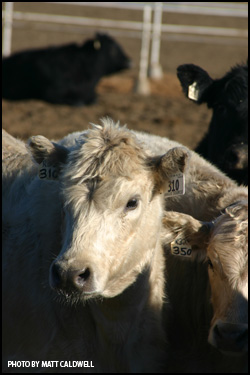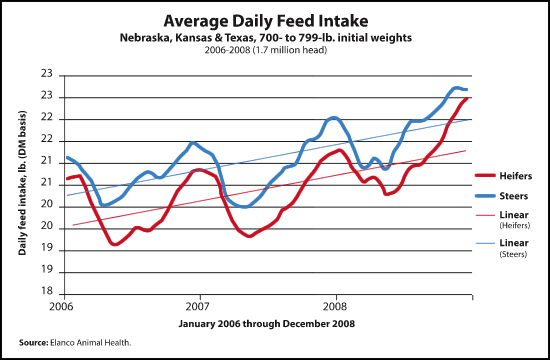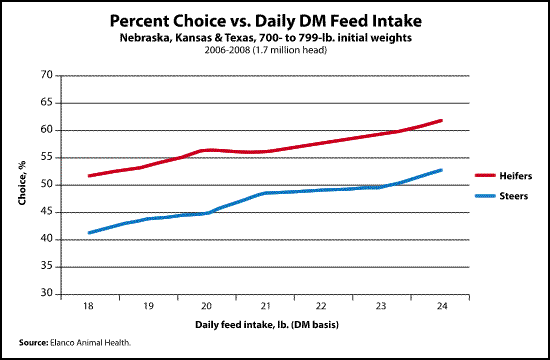 Favorable Feeding
Favorable Feeding
Conditions
Favor Beef Quality
Cattle feeding conditions vary by location. One yard might be knee-deep in snow, while the other is dealing with piles of mud. Record-high temperatures might cause heat stress in one area while cattle in another region are enduring torrential rainfall.
Even with all that variability, one fact rings true: Better conditions mean better beef quality.
"Animals that are able to devote more of their dietary intake to gain will have better carcass quality," says Joe Young, vice president of AgSpan.
In a research review, Larry Corah and Mark McCully of Certified Angus Beef LCC (CAB) point to several factors that have caused quality grade to rebound 7.5 percentage points in just two years, following a 30-year decline.
"In general, feeding conditions for cattle the past two years have been very good," the authors say, noting data from Elanco's Benchmark® Performance Program, managed by AgSpan. Hundreds of feedlots report performance, carcass and health information to the database, which now numbers more than 100 million points of data.
From 2006 to mid-2009, dry-matter intake (DMI) increased by about 1 pound (lb.) for both steers and heifers. At the same time, average daily gain (ADG) improved.
"Driving intakes, improving intakes, maintaining consistent intakes — they all do the same thing," Young says. "We've got to have intakes to get performance and enhance carcass quality. If anything takes those animals off feed, then you'll channel more of that energy to other needs within the body."
For example, higher ADGs through the winter months probably indicate mild weather.
"If they're not fending off blizzards, severe cold or deep snows, more of that intake can be devoted to gain verses maintenance," he says.
Health affects cattle in the same way. Iowa State University research shows that cattle needing multiple treatments don't grade as well as healthy penmates. Those requiring no treatment graded 74.5% Choice vs. 57.5% Choice in those cattle treated two or more times — a difference of 16.5 percentage points.
Benchmark mortality data confirm that feedlot health has seen a slight improvement over the past few years.
"Animals closed out in spring 2004 had the highest mortality rate of anything we'd seen up until that time," Young says. "It was a fairly steady trend higher."
Heifers showed an average death loss of 2.64% at the peak, but that recovered to less than 2% last spring.
"We've seen those rates adjust somewhat, and the higher mortality rates have generally subsided," he says.
The fact that this happened as quality grade started to climb could be more than a coincidence, Corah and McCully say.
"While there are no definitive correlations, the trends within DMI, ADG and feedlot health would all suggest improved feeding conditions have had a positive influence on quality grade," the research paper says.
To read "Quality Grade: What is driving the recent upswing?" in its entirety, visit www.cabpartners.com/news/research/index.php.


Comment on this article.




